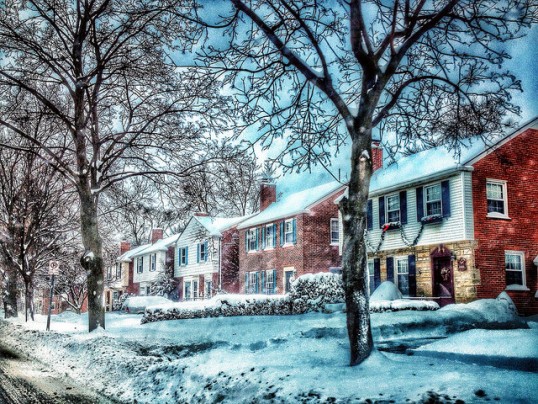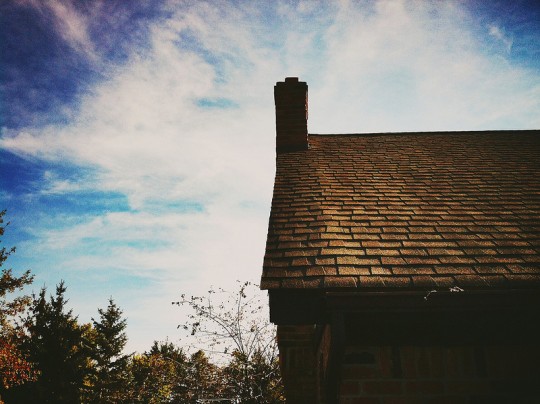Freddie Mac’s quarterly refinance analysis for the fourth quarter of 2013 shows borrowers continuing to take advantage of historically low mortgage rates to reduce their monthly mortgage payment and shorten their loan terms. According to the report, borrowers who refinanced in 2013 will save on net approximately $21 billion in interest over the next year. Frank Nothaft, Freddie Mac’s vice president and chief economist, said the refinance boom began to wind down as the pool of potential borrowers declined and mortgage rates increased during the second half of the year. According to Nothaft, the refinance share of total mortgage activity will fall further this year, as refinance demand drops and the emerging purchase market consumes a bigger piece of the pie. Also in the report, the average interest rate reduction in the fourth quarter was about 1.5 percentage points. On a $200,000 loan, that’s a $3,000 savings over the next 12 months. More here.
Tag Archive for chief economist
Economists Forecast Solid Year For Housing
Following a year of significant improvement in the housing market, four prominent economists are forecasting a solid 2014, according to a yearly survey from RealtyTrac. Mark Zandi, chief economist at Moody’s Analytics, believes this year should be a good one for the economy, as long as government gridlock doesn’t interfere with the progress. Zandi feels that if policymakers do no harm in 2014, the economy should do well and home prices should rise about 5 percent. The National Association of Realtors’ Lawrence Yun also expressed concern over federal policies, warning that regulations focused on lowering default risk may, in fact, restrict access to credit and impede the mortgage market. On the other hand, Chris Thornberg, principal at Beacon Economics, sees continued improvement in the housing market’s future. According to Thornberg, new home sales should be up this year and – though existing-home sales will remain around the same level as last year – there will be less investor activity and more retail buyers. Other economists cautioned that there is still room for improvement in the economy and housing market. Jed Kolko, chief economist at Trulia, is concerned that, while prices and sales volumes are now near normal levels, a shaky labor market means fewer young adults are moving out on their own and forming households. More here.
December Weather Affects Pending Home Sales
The National Association of Realtors’ Pending Home Sales Index is a forward-looking indicator that tracks contract signings, not closings. The index, which is released monthly, is a predictor of future existing-home sales. In December, the index fell 8.7 percent from November’s downwardly revised total. Lawrence Yun, NAR’s chief economist, said unusually disruptive weather across large stretches of the country forced people indoors and prevented some buyers from looking at homes and making offers. According to Yun, rising home prices and lack of for-sale inventory are also to blame for the poor sales performance in December. Still, existing-home sales are expected to be at about the same level this year as last year, despite the fact that inventory is limited in much of the country. Prices, though still rising, are expected to moderate this year, gaining about 5.4 percent in 2014. More here.
Older Homes Offer Bargains For Buyers
More than 70 percent of U.S. single family homes were built before 1990, according to new research from RealtyTrac. That means fewer homes available for sale that are less than 20 years old but also better deals for potential buyers. Jake Adger, chief economist at RealtyTrac, said the higher percentage of homes that are at least 20 years old is eye-opening but also an opportunity for buyers. According to Adger, buyers willing to take on an older home in need of some rehab will likely be able to purchase it at a lower price point and with less competition. This year, 60 percent of home sales have been houses built before 1990. Those homes sold for an average price of $233,221. Homes built after 1990 sold for an average of $256,292. More here and here.
Existing Home Sales Up in August
Sales of previously owned homes rose in August, according to the National Association of Realtors. Total existing-home sales increased 1.7 percent from the month before and were 13.2 percent above year-before levels. Regionally, sales were up in the Midwest and South, flat in the Northeast, and down in the West. But, despite reaching the highest sales pace since February 2007, Lawrence Yun, NAR’s chief economist, said the market may be experiencing a temporary peak. Yun cautioned that sales may be uneven in the months ahead due to tight inventory and less favorable affordability conditions. In short, fewer homes for sale puts upward pressure on prices. In fact, the median home price in August was up nearly 15 percent from 2012 and has posted double-digit increases for nine consecutive months. More here.





